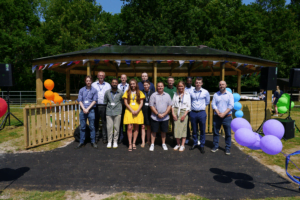A “breathtaking” view featuring a historic two-arched bridge has been preserved for years to come through National Highways’ Historical Railways Estate (HRE).
Set in the middle of Dartmoor, Lustleigh Viaduct – which National Highways says should in fact be “Lustleigh Bridge” because it is short and only has two arches whereas viaducts feature a series of arches or spans – was being damaged by several tree roots that were pushing into the masonry.
The issue was picked up during one of the bridge’s regular inspections and HRE contractors Dyer and Butler dealt with the problem before it causes significant damage
HRE Engineer Matt Irwin said: “Lustleigh Viaduct is as picturesque as it is quirky and we’re delighted these repairs have been successful as damage caused by trees is a common problem on many of our structures. The roots grow surprisingly quickly and if left untreated can cause significant issues.”
Before the 18-day programme of work started ecologists undertook local surveys to ensure that no wildlife would be adversely affected by the work. With protected species such as bats, dormice and otters being recorded in the general vicinity of the bridge this was essential to ensure no harm or disruption was caused.
The surveys also allowed Dyer and Butler to identify additional biodiversity enhancements that could be included into the programme and as a result bat and bird boxes were erected on the surrounding trees and along the riverbed. There are also plans to install a bumble bee box and plant a variety of native wildflower seeds to enhance the area’s biodiversity even more.
Mr Irwin added: “We’re proud that we were able to give the wildlife and biodiversity around the bridge a boost, helping nature as well as preserving an important part of our local industrial heritage for future generations.”
During the work all roots were successfully removed from the bridge with contractors working from the ground as well as hanging from ropes attached to the top of the bridge. A treatment was also applied to prevent future growth.
In places where roots were growing into the joints, the team temporarily removed sections of masonry to allow the roots to be accessed and taken out. The masonry was then reinstated on a like for like basis, to keep to the structure’s original charm. In addition, contractors repointed and repaired damaged brick work and stitched fractures.
(Picture – National Highways)





















